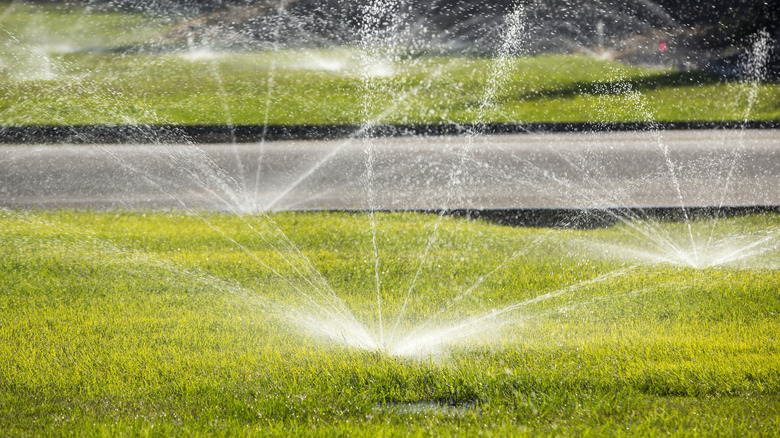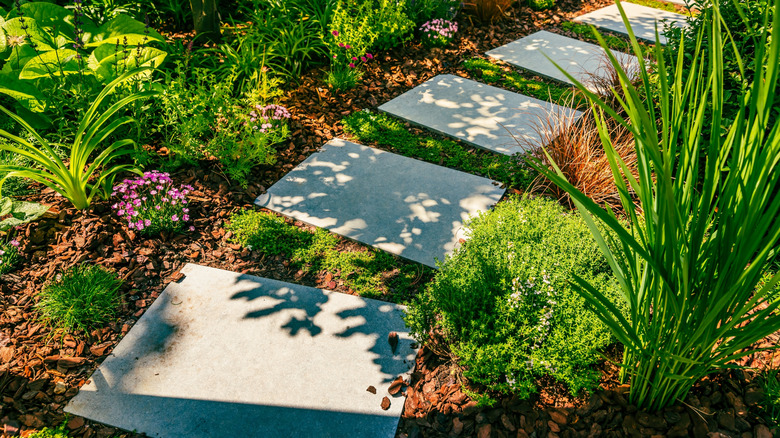The Traditional Green Lawn Is Being Replaced With A Trendier Landscape Option
Nothing says "American dream" like a perfectly manicured, expansive, lush green lawn. But in recent years, critics have pointed out the downsides of turf, urging homeowners to replace their thirsty lawns with more functional and eco-friendly outdoor spaces. In 2025, experts say that the trend will be kicking into overdrive, with a sharp increase in people cutting back on their lawns in favor of more natural-looking landscapes full of native plants. Green lawns remain entrenched in American tradition — drive through any suburban neighborhood and you're guaranteed to see them in many front yards. But as 2024 comes to a close, they're starting to fall out of favor with some. Kevin Lenhart, design director at Yardzen, told Homes & Gardens that he's seen a 29% increase in requests to remove part or all of clients' lawns over the past year.
The tide is shifting in part because of environmental concerns: 7 billion gallons of water go toward watering American lawns every day, an increasing hardship with droughts expanding across the country. Lawns don't support wildlife nor produce food; on the contrary, they may harm ecosystems with the amount of gas, pesticides, and fertilizers required for their upkeep.
In comparison, trendier native landscapes incorporate plants that are well-adapted to the local climate, and can thrive year after year with minimal maintenance. By using less water and other resources, they save you money and time (goodbye mowing), in addition to supporting a healthy ecosystem. These landscapes also attract beneficial pollinators, birds, reptiles, and other critters, helping to make outdoor time more fulfilling by deepening your connection with nature.
What the new trend looks like and how to try it
Planting a classic green lawn typically involves choosing just one type of grass seed. Replacing your lawn with a more natural-looking landscape, on the other hand, opens up a whole world of different species to choose from, from ground cover to wildflowers. Many homeowners opt for native perennials and evergreens, pollinator host plants, drought-resistant native grasses, and other low-maintenance native ground cover alternatives. You can also grow some edible plants, and use stone, brick, mulch, or gravel for landscape pathways through high-traffic areas.
Making the switch away from turf grass requires some patience and flexibility. The first step is to remove your lawn. This can be done by digging it out, sheet mulching with cardboard, or using a sod cutter. There's no need to do the entire yard at once. You can start small with areas of the lawn that tend not to do so well anyway, or start with areas that don't see much use.
Next, evaluate the conditions in that spot, including sunlight and soil type. This will be essential information for deciding which native plants to start with, and where to place them. Then connect with a local plant nursery or your local cooperative extension for advice. The goal is to find plants that will naturally thrive in your yard without too much extra effort on your part.

